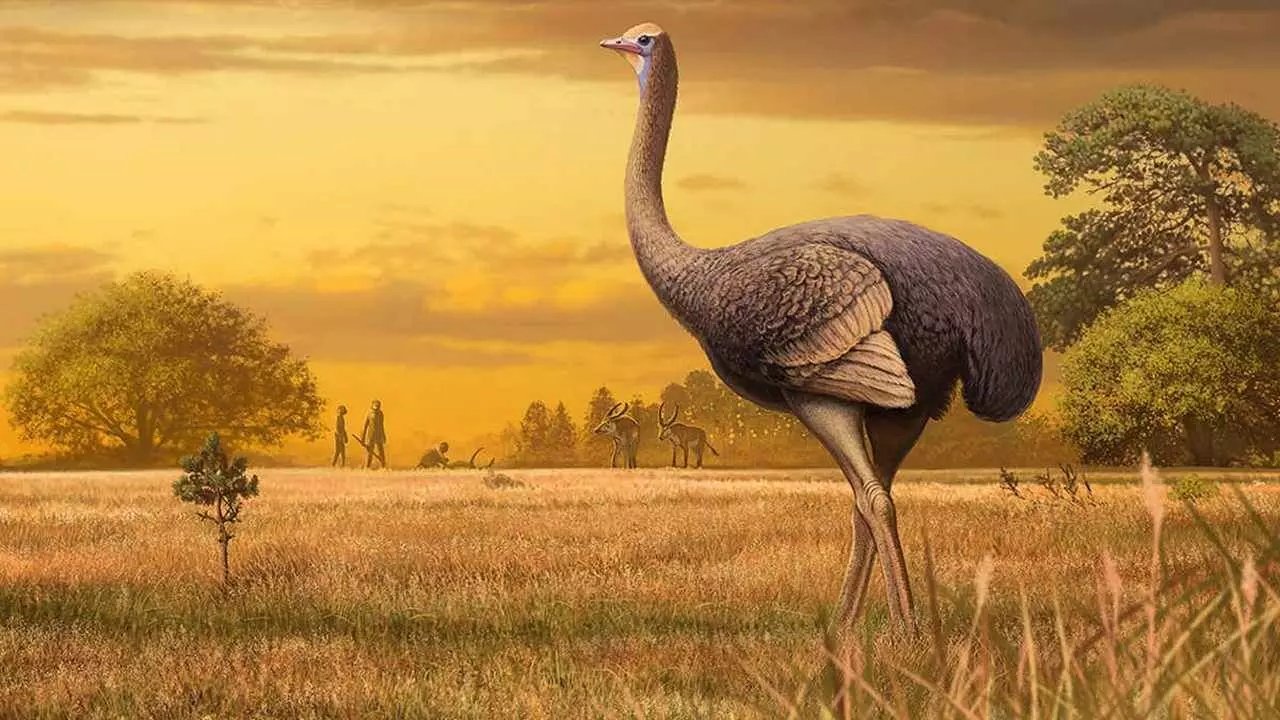TRENDING TAGS :
The Running Warrior of Nature That Sprints at 70 km/h — Discover the Unique Bird: The Ostrich
Discover the incredible speed, anatomy, lifestyle, and history of the ostrich—the world’s fastest bird on land. Learn how it thrives in the wild and its growing connection with humans through farming and conservation.
Ostrich (PC- Social Media)
The ostrich (Struthio camelus) is a large and distinctive bird native to Africa. Its name originates from the Greek words “Struthos” (bird) and “Kamelos” (camel), reflecting its size and stature. It is the largest living bird in the world, with a height ranging from 1.8 to 2.75 meters and an average weight of 60 to 130 kg, although some males can reach up to 160 kg. Though flightless, its running ability is extraordinary—it can sprint up to 70 km/h, making it the fastest bird on land.
Its body is uniquely designed with small wings and long, powerful legs that aid in running. Ostriches also have the largest eyes among land vertebrates, which allow them to detect danger from great distances.
Running Ability of the Ostrich
The ostrich holds the record for being the fastest land-running bird, capable of running at speeds of up to 70 km/h. This impressive speed is largely due to its long, muscular legs, with thigh and hip muscles concentrated in the upper body, making the lower limbs lighter and more energy-efficient while running. Their legs contain long and flexible tendons that act like springs to propel them forward.
Its body is aerodynamically adapted for balance while running—its center of gravity and forward-leaning neck help maintain stability. Although its wings are not functional for flight, they play a crucial role in balance. Despite its heavy body, the ostrich’s leg strength and muscular power enable it to maintain high speeds without exhaustion.
The Physical Structure of the Ostrich
Height and Weight
Standing 2.5 to 3 meters tall, the ostrich is taller than most humans. Weighing 100 to 160 kg, males are generally heavier and taller than females. Its large body and balanced structure help it run fast and stay safe from threats.
Head and Eyes
The ostrich’s small head houses gigantic eyes—each about 5 cm in diameter, the largest of any land animal. Their sharp vision allows them to spot predators from several kilometers away, making them extremely alert in open terrains.
Long and Flexible Neck
The ostrich’s long, thin neck provides height advantage and helps it spot food and predators from afar. The sparse feather coverage aids in heat regulation in hot climates.
Wings and Flight Capability
While ostriches have wings, they are too small and weak for flight. However, wings serve other purposes like maintaining balance while running, courtship displays, providing shade to chicks, and regulating body temperature. Males have black feathers with white edges, while females have brown feathers, providing camouflage.
Strong Legs – The Secret of Speed
Ostrich legs are its most remarkable feature. It has only two toes, a rare trait among birds. One of them is large with a strong nail, aiding in balance and self-defense. Ostriches can leap up to 3.5 to 5 meters in a single stride, demonstrating incredible athletic ability.
Skin and Color
Its thick skin makes it well-suited for arid, desert-like environments. Males are dark black, while females are light brown, aiding in camouflage and attracting mates. Ostrich skin is so durable it is used to make premium leather products.
Beak and Diet
The ostrich has a short, wide, and pointed beak, ideal for picking food from the ground. It is omnivorous, eating grass, seeds, fruits, insects, and even small pebbles. The pebbles aid digestion as it lacks teeth. Its beak allows it to consume dry and tough vegetation effectively.
Internal Anatomy
The ostrich has a strong heart and lungs, enabling endurance during long runs. It has a specialized digestive system capable of processing fibrous plants. Like other birds, ostriches do not have a urinary bladder—they excrete waste in a combined form. Their gizzard helps grind food for digestion.
Ostrich Habitat and Lifestyle
Ostriches are native to the grasslands, savannas, and deserts of Africa and are also found in some parts of South Asia. They thrive in hot and dry climates, preferring open plains for easy movement and predator detection.
Their diet includes grasses, seeds, roots, and certain plants. Their large eyes and height offer an advantage in spotting danger from afar, allowing them to flee with remarkable speed.
Ostrich Reproduction
Female ostriches lay 10 to 15 eggs at a time, occasionally up to 20. Their eggs are the largest in the world, weighing between 1.3 and 1.8 kg, and have a hard shell that offers protection against predators and environmental pressure.
Both parents share incubation duties—the male guards the eggs at night, while the female warms them during the day, ensuring optimal development. After hatching, both parents jointly protect and raise the chicks. During mating season, a male may mate with multiple females, but it builds a nest with the primary female.
Ostriches and Human Connection
In ancient times, ostrich eggs and feathers were highly valued. Their egg shells were used to make jewelry and ornaments—evidence of this has been found in India’s Paleolithic sites. Ostrich eggs were also consumed as food, while their feathers were used in clothing and decoration.
Today, ostriches are commercially farmed for their eggs, meat, and leather. Their leather is strong and durable, ideal for high-end goods. Ostrich eggs are still used in culinary settings and are priced high in markets. Their feathers are used in the fashion industry, especially for women’s hats and ornamental garments.
Conservation of Ostriches
The International Union for Conservation of Nature (IUCN) categorizes the ostrich (Struthio camelus) as “Least Concern,” indicating it is not globally threatened. However, some subspecies, like the North African ostrich, are facing severe habitat loss and have become extinct in parts of their natural range.
Major threats to ostrich populations include poaching, habitat degradation, egg collection, and climate change. Conservation efforts include habitat protection, breeding centers, and reintroduction programs. Additionally, ostrich farming in countries like South Africa plays a crucial role in both economic use and species conservation.
Related Searches
ostrich speed, fastest bird on land, ostrich facts, ostrich anatomy, ostrich bird lifestyle, ostrich habitat, ostrich reproduction, ostrich conservation, ostrich farming, ostrich egg size.


